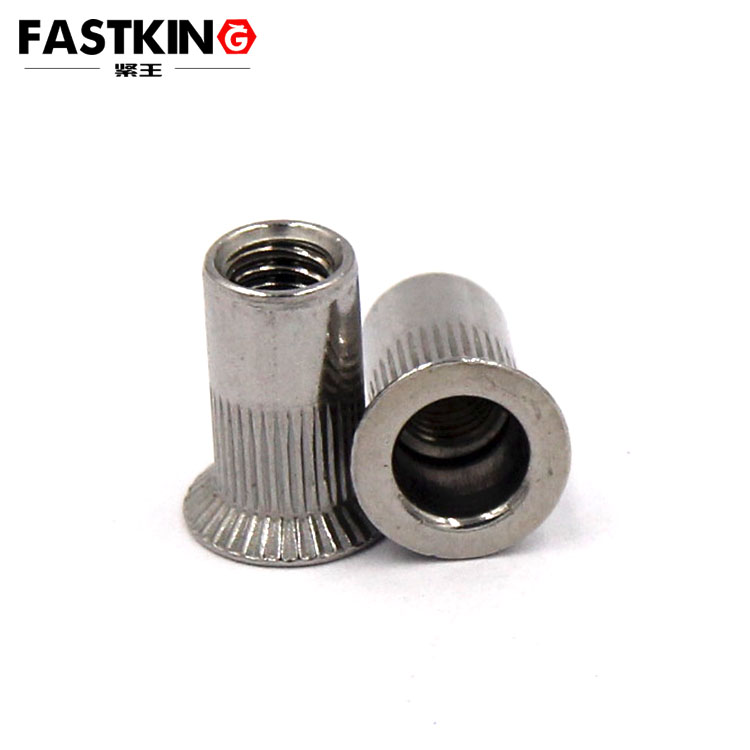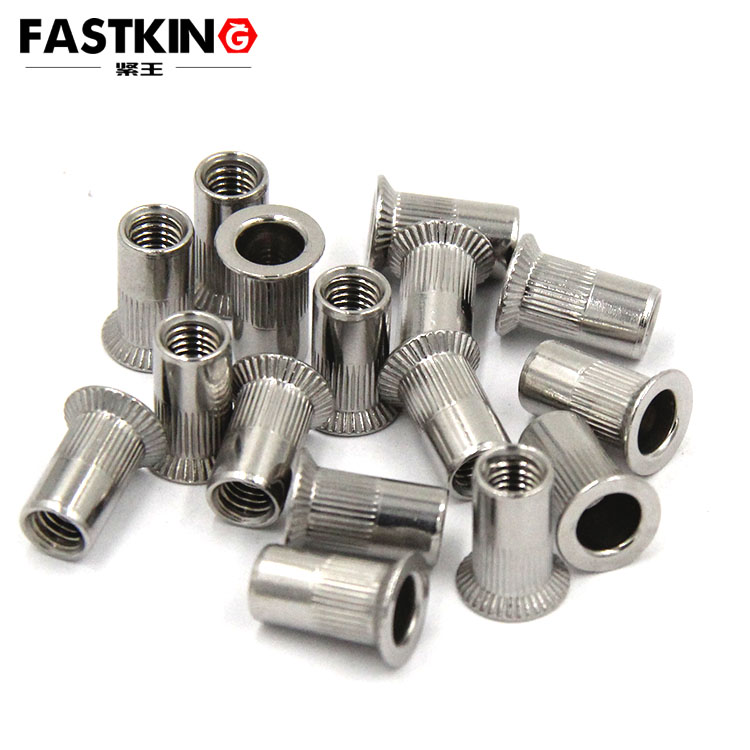In the realm of modern industrial manufacturing, large countersunk vertical stripe rivets have become indispensable fastening components in numerous critical engineering projects due to their unique structural design and exceptional connecting performance. These rivets not only inherit the reliability and durability of traditional rivets but also achieve breakthrough advancements in fastening technology through innovative vertical stripe design and countersunk structure.
I. Structural Characteristics of Large Countersunk Vertical Stripe Rivets
The head of the large countersunk vertical stripe rivet features a 120-degree countersunk design, allowing it to sit perfectly flush with the connecting surface after installation. This ensures both aesthetic appeal and eliminates potential safety hazards caused by protruding parts. The meticulously designed vertical stripes on the shank increase surface roughness, significantly enhancing the friction between the rivet and the connected materials.
These rivets are manufactured from high-strength alloy steel and undergo special heat treatment processes, resulting in a tensile strength exceeding 1000MPa and a shear strength of over 600MPa. The zinc-plated surface not only enhances corrosion resistance but also ensures long-term reliability in harsh environments.
II. Working Principles and Technological Innovations
During installation, large countersunk vertical stripe rivets are subjected to axial tension using specialized tools, causing the shank to undergo plastic deformation and form a robust mechanical connection with the connected parts. The vertical stripe structure plays a crucial role in this process by increasing microscopic interlocking at the contact surface, significantly improving connection strength.

Compared to traditional smooth shank rivets, the vertical stripe design enhances connection strength by approximately 30% and improves vibration resistance by over 40%. This innovative design is particularly suitable for connections subjected to alternating loads and vibrating environments, effectively preventing loosening.
III. Application Fields and Engineering Value
In the aerospace industry, large countersunk vertical stripe rivets are widely used in critical areas such as aircraft skin and wing structures. Their reliable fastening performance and excellent fatigue resistance ensure the safe operation of aircraft under complex conditions. In the rail transportation sector, these rivets are used for connecting train body structures, with their vibration resistance ensuring safe and comfortable train operations.

In building curtain wall engineering, the high strength and weather resistance of large countersunk vertical stripe rivets make them an ideal choice for connecting glass and metal curtain walls. In heavy machinery manufacturing, these rivets are used for connecting critical load-bearing components, with their exceptional load-bearing capacity ensuring reliable equipment operation.
The application of large countersunk vertical stripe rivets not only enhances the connection reliability of engineering structures but also drives advancements in modern manufacturing technology. With the continuous development of new materials and processes, these rivets will undoubtedly demonstrate their unique advantages in more fields, providing safer and more reliable fastening solutions for industrial manufacturing.
